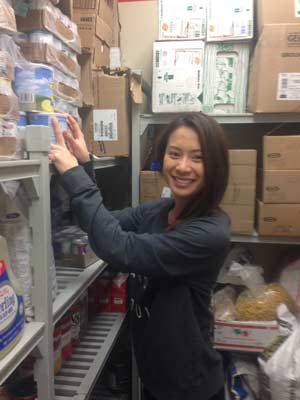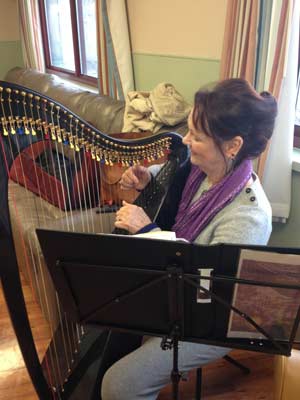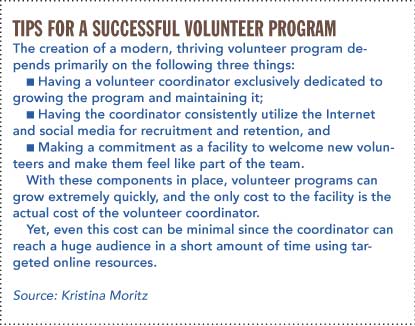
Volunteering has changed. Until recently, the only way to recruit volunteers was to plaster flyers in libraries, churches, and schools, with the hope of attracting a few people to come read the Bible to residents or call numbers at the weekly Bingo game.
While this outdated concept of volunteer recruitment and management may be familiar, the benefits of a modern and well-run volunteer program may not be. Here is the new reality: There are hundreds of people in the immediate community eager to get involved, and these volunteers can not only improve the quality of life and satisfaction with stays for residents and patients, but they can also lower building expenses, increase job satisfaction for staff, and become the best marketing tool a facility has.
Nontraditional Paybacks
The best part: The ability to connect with potential volunteers is literally right at one’s fingertips.
Littleton Care and Rehabilitation in Littleton, Colo., launched its volunteer program in December 2012, under the direction of a volunteer coordinator working 18 hours per week.
Before the program began, Littleton was much like any other care center, with only several longtime volunteers helping in the activities area. In the span of just 10 months, this new program has welcomed more than 350 individual volunteers into the building and now consistently provides more than 100 hours of volunteer time each month.
Many activities are now exclusively run by volunteers, freeing staff to focus on other tasks, and in the past few months, more and more patients have chosen Littleton Care and Rehabilitation after a referral by a volunteer.
Furthermore, by recruiting volunteer musicians and performers, and by designing volunteer positions to assist with nontraditional areas like reception, dining, and landscape maintenance, the volunteer program at Littleton has benefitted the center financially as well.
For a building with only 34 residents, this influx of community members has absolutely transformed Littleton Care and Rehabilitation and set it apart from other nursing centers offering similar services.
Given the success in Littleton, the program has quickly expanded to three more Ensign Group buildings around Denver. All four are experiencing the benefits of thriving volunteer programs, and each is pioneering new and exciting ways to utilize volunteers for the betterment of the entire facility.
Areas Of Service Branch Out
Whereas the old model of volunteering focused almost exclusively on resident-centered activities of service, such as assisting with scheduled group activities and visiting with residents one-to-one, a more modern approach also understands that volunteering can be a means to acquire valuable skills and experience in the growing fields of health care, business, and nutrition.
While volunteers have always been recognized as a valuable resource for a facility, it is equally important to recognize that a nursing home can be a valuable resource for the volunteer.
For example, one of the most popular areas of volunteering is the dietary volunteer position. These are volunteers who assist in the dining room during mealtimes with the goal of ensuring a more attentive and friendly environment for the residents and patients.
This position is appealing for volunteers who want to get to know seniors without the pressure that can come from individual interaction, but it is especially appealing for people heading into any branch of culinary arts, hospitality, food service, or nutrition and dietetics.
Opportunities For Volunteer Skill Building
These new volunteers are not only interested in helping out the seniors in their community, but they are also eager to gain experience that could give them an edge in securing competitive internships or improve their career marketability.

For the dietary departments at the facilities, the advantages of the dietary volunteer program are clear: increased resident and patient satisfaction with meal service, shorter clean-up time for the dietary staff, and the relief of knowing that there is a group of people on hand that can keep the dining room running smoothly if the dietary department is unexpectedly short-staffed due to illness or absence.
The dietary volunteer position is just one example of the many nontraditional volunteer opportunities that exist alongside the more traditional volunteer routes in the Denver Ensign buildings.
These nontraditional opportunities not only provide experience to the volunteer and help to the staff, but they also increase the diversity of a building’s volunteer base.
Matching Tasks To Volunteers For Overall Satisfaction
Generally, older adults tend to be interested in the more traditional volunteer roles of one-to-one conversation and group games and crafts, and younger people (teenagers, college students, young professionals, and parents with small children) tend to be interested in volunteer areas that provide an opportunity to learn or practice a new skill.
If a building limits its view of volunteering to the outdated one presented at the beginning of this article, then it inherently limits the number and diversity of potential volunteers. When a wide variety of innovative volunteer positions are designed and offered, a wide variety of people will respond, bringing community members from all walks of life into the building and enriching the overall culture of the institution.
Coordinator Important
To illustrate how a volunteer coordinator can benefit on a larger scale, all four of the Ensign Group buildings in the Denver area share one volunteer coordinator, who works a total of 20 hours per week, meaning that each building essentially pays for five hours of volunteer coordination per week.
With this small investment, these buildings have seen their volunteer numbers grow exponentially, with no end to their growth in sight (
see box).

As a specific example of this growth, another Ensign Group building in Denver, Sloan’s Lake Rehabilitation, saw its monthly volunteer hours top 100 after only five months of working with the same volunteer coordinator.
All centers in the field of long term care, skilled nursing, and assisted living face the same challenge of meeting growing responsibilities with limited resources. Very often, the response to this challenge has been to focus almost exclusively on cutting expenses.
However, when a facility begins to view the surrounding community as an untapped resource, it can add value to an institution by providing both immediate and long-term benefits, and it soon becomes clear that a modern volunteer program can itself provide the solutions to some of the problems that cost-cutting efforts have sought to address.
Under the direction of a volunteer coordinator who has a vision for what the new world of volunteering can be and an understanding of all the valuable experiences a nursing home or assisted living community can offer, the modern volunteer program is one in which everyone wins: residents, volunteers, and the entire community.
Kristina Moritz is volunteer coordinator for the Ensign Group buildings of Denver: Littleton Care and Rehabilitation, Sloan’s Lake Rehabilitation, The Julia Temple Healthcare Center, and Arvada Care and Rehabilitation. Moritz can be reached at KMoritz@EnsignGroup.net or (720) 400-0978.